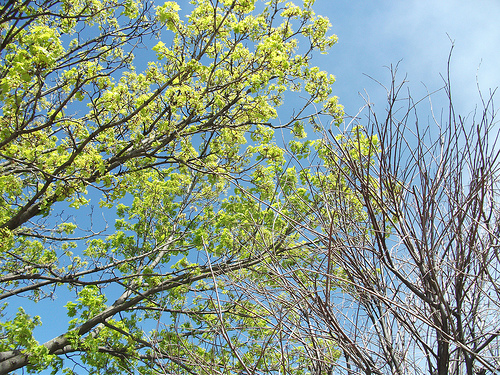As plants start to awaken after a long winter slumber, you may notice that one or more of your trees do not have leaves or blossoms yet. The thought that they may have died from exposure to the harsh weather comes to mind. How can you check to see if the tree is still alive or not so that you can replace it if necessary?
Know Your Species
Some kinds of trees will send out leaves and flowers earlier than others, so it is important to keep that in mind when observing the stragglers. You can ask your extension office or garden center worker, or do a search online to see if this is the case for your specific species.
Check for Buds
Look at the branches for signs of flower and leaf buds. Once you find them, inspect to see if you can see signs of swelling or if they are green. That is another sign that the tree is doing fine. If they look small and dry, it is still possible that they could swell and open soon, though.
Do a Thumbnail Scratch Test
Take your thumbnail and gently scratch the trunk (young trees) or a branch hard enough to remove the top layer of bark. If you reveal green underneath, the tree is still alive. If it is brown, check a different branch to make sure that it’s not just that one branch. If that one is also not green, there’s a good chance that the tree has perished. For large trees especially, calling in an arborist for a definitive answer would be prudent.
Remove if Necessary
If you determine that the tree is no longer living, now is a good time to remove it and work on planting a replacement if desired. Spring is a good time to put in new trees, as well as fall for many species. Depending on the age, species and size of the tree, you may need to call in an arborist company so that it is taken out safely. These companies have the equipment and training to help ensure that you don’t run into problems like a tree falling on your house or injuring people.
Image by Shamanic Shift under a Flickr Creative Commons Attribution-ShareAlike License



